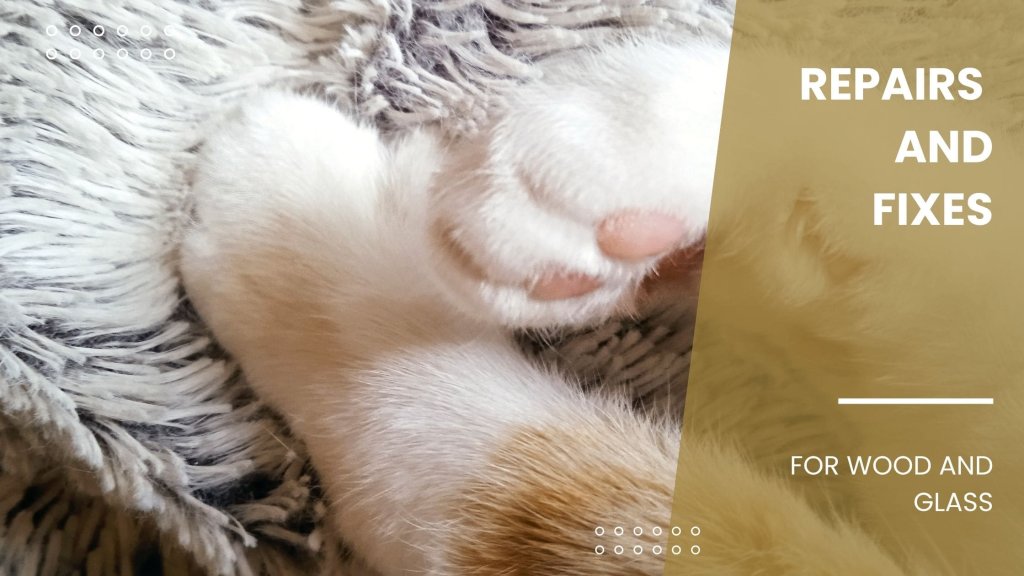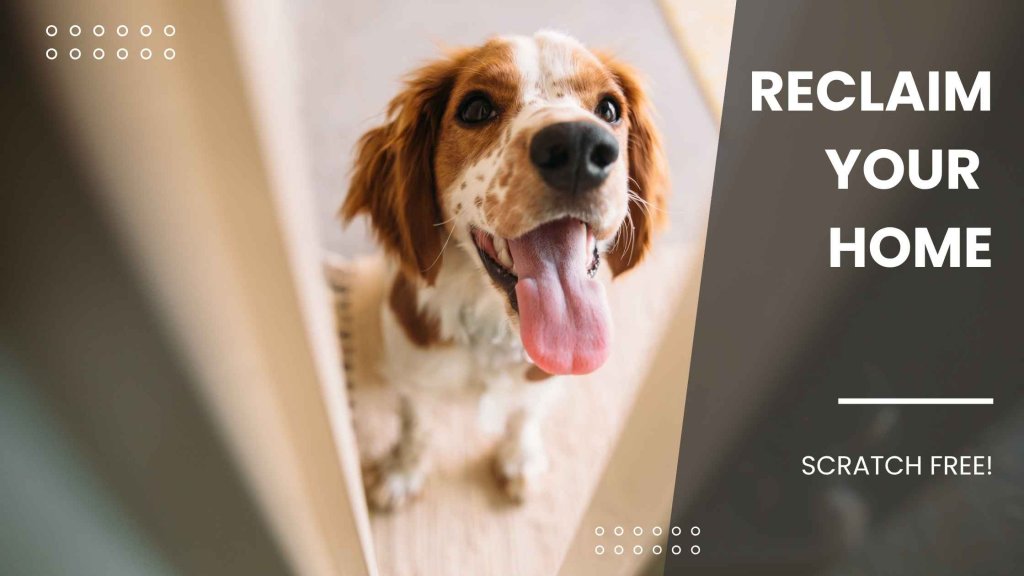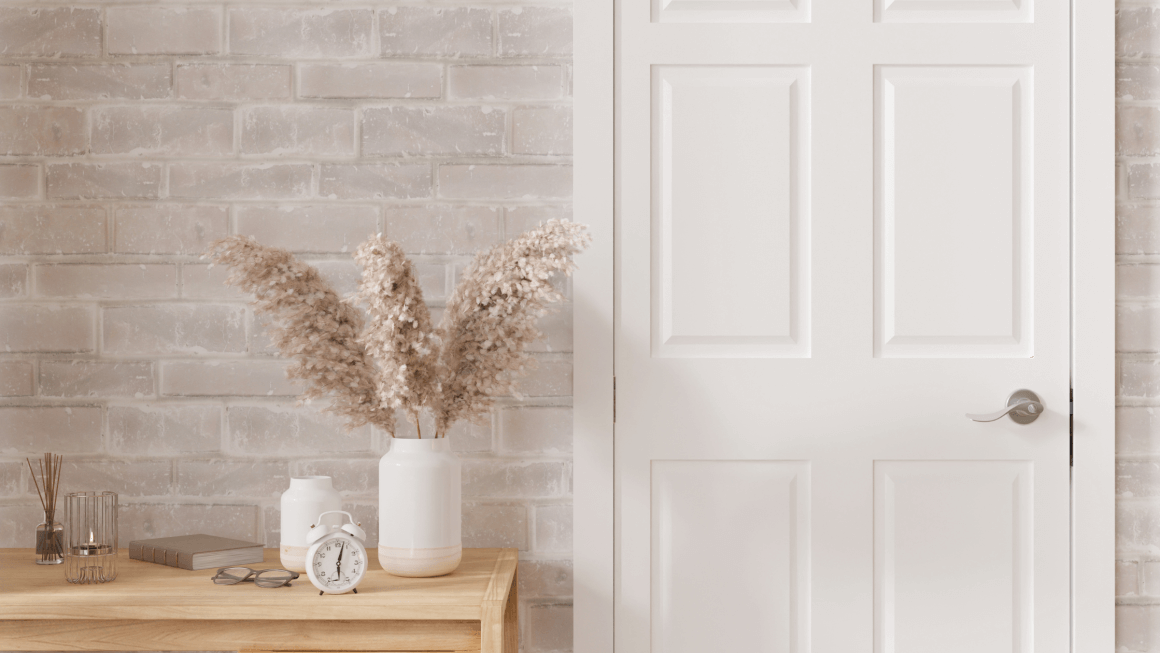If you share your home with a four-legged friend, you already know the joy, love and, let’s be honest, the occasional chaos they bring into your life. Whether it’s an excited pup scratching at the door to let you know it’s time for walkies, or a curious cat stretching their claws just because they can, claw marks on a door’s surface can feel like the price you pay for pet ownership. But it doesn’t have to be that way.
Pet claw marks can turn your once-beautiful door into a worn and weathered eyesore. The good news? There are simple, effective ways to prevent and fix the damage, and get your home looking as loved as your pet makes you feel.
In this guide, we’ll walk you through why claw marks happen, how to prevent them, and what to do if your door has already got some surface damage. Whether you’re a DIY novice or a seasoned tradesperson, you’ll find practical tips to suit your needs.
Why Do Pets Scratch Doors?
Think of your pet as a little furry communicator. When they scratch, they’re trying to tell you something:

- Separation Anxiety: Dogs often scratch doors when they’re left alone. It’s a nervous response, like chewing slippers or howling at the moon.
- Territorial Behaviour: Cats and dogs alike may mark areas they consider theirs.
- Attention-Seeking: Sometimes, it’s simply because they want you, or whatever’s on the other side of the door.
- Boredom or Energy Overflow: A pet with too much pent-up energy will often take it out on furniture, walls… or yes, your doors.
Understanding the “why” behind the behaviour is the first step to preventing it. If you focus solely on the damage itself, it’s likely to happen again.
Prevention: Stopping the Scratches Before They Start
It’s much easier (and cheaper) to prevent damage than to fix it later. Here are some pet-friendly strategies that actually work:

1. Install a Pet Door
A well-placed pet flap can work wonders. It gives your pet the freedom to come and go without needing to scratch or bark for your attention. Just make sure it’s installed at a comfortable height for your pet and securely sealed against draughts.
2. Use Protective Film or Panels
Transparent scratch-resistant films or plastic door guards are widely available and easy to install. They won’t win design awards, but they’re a simple way to save your woodwork, especially useful if you’re in a rental property.
3. Keep Claws Trimmed
Think of it like regular grooming. Blunt claws cause less damage. Most pets tolerate nail trimming if introduced gently, or you can ask your vet or groomer to help.
4. Train with Positive Reinforcement
If your dog scratches at the door when they want to go out, teach them a new way to communicate, like ringing a bell or sitting by the door. Consistency and treats go a long way!
5. Create a Routine and Reduce Anxiety
A well-exercised, mentally stimulated pet is a calm pet. Regular walks, interactive toys and a stable routine will help reduce nervous habits.

Fixing the Damage: Repairing Pet Claw Marks on Doors
So your door looks like it went a few rounds with a bear. Don’t worry. With a bit of time and effort, you can restore it. Let’s break it down by material and severity, as there are various types of door that may need repair.

How to Fix Scratch Marks on a Wooden Door
Light Surface Scratches:
- Lightly sand the scratched area using fine-grit sandpaper.
- Wipe the sanded area clean with a damp cloth.
- Apply matching wood stain or paint.
- Seal with a protective finish.
Take a look at this useful demo on TikTok:
@therenegadehome How to fix deep scratches in doors✨ Here's what I used👇 -Multi-purpose putty -Putty knife -Sanding block -Paint Overall this is a pretty easy repair and you can totally do it👏 #diyproject #drywallrepair #homeimprovement ♬ Stompin At The Savoy – Benny Goodman
or this alternative quick fix:
- Sand the area down to remove rough edges.
- Fill the gouge with wood filler. Let it dry completely.
- Sand smooth.
- Apply primer if painting, or a matching stain if staining.
- Finish with a top coat or varnish.
Deep Gouges:
Tip: Think of it like icing a cake, you’re smoothing out the surface before adding the decorative finishing layer.
How to Repair Pet Scratches on Glass Doors
Glass is tougher than it looks but not immune to scratches.
- For light scratches, a cerium oxide glass polishing kit (often used for car windscreens) can buff out marks on the damaged area.
- For deeper scratches, replacement glass may be the most practical option. Some mobile glaziers offer affordable, quick replacements if needed.
Pro Tip: Always clean the glass thoroughly before attempting any repair work, or you’ll be rubbing dust into the scratch.
How to Repair a Dog’s Damaged Door Frame
When your pooch has taken their frustration out on the frame itself, you’ll need a bit more elbow grease:
- Sand down any splintered or damaged wood.
- Use wood filler or putty to rebuild missing chunks.
- Allow it to dry fully, then sand smooth.
- Prime and paint, or stain and varnish the repaired area.
- Consider adding a metal kick plate or frame guard for future protection.
Matching Colours: The Art of the Blend
One of the trickiest parts of repair is getting the colour right, especially if your door has a stained rather than painted finish.
- Use gel stains to create a blend.
- Always start with a lighter colour and darken gradually.
- Test on a hidden area first.
- Once dry, compare the finish to the surrounding area. If it’s too matte, use a clear coat to restore the original sheen.
Think of it like blending foundation to match your skin tone, it needs to be subtle and seamless.
A Final Word of Encouragement
Fixing a door that’s been damaged by your beloved pet isn’t just about tidying up. It’s about reclaiming your space and finding harmony between beautiful interiors and happy pets.

You don’t have to choose between a well-behaved dog and a well-kept door. With some planning, a few supplies, and a bit of patience, you can have both.
So next time you see those scratch marks at the bottom of your door, don’t sigh with frustration. Take it as a reminder of the joyful chaos pets bring into our lives, and feel empowered knowing you now have the tools to tackle it, and to prevent further damage.
Need a Fresh Start?
Sometimes the best solution is a brand-new door. Browse our collection of solid wood internal doors—oak, walnut, glazed, fire-rated and more. With free delivery over £750, there’s never been a better time to upgrade.






